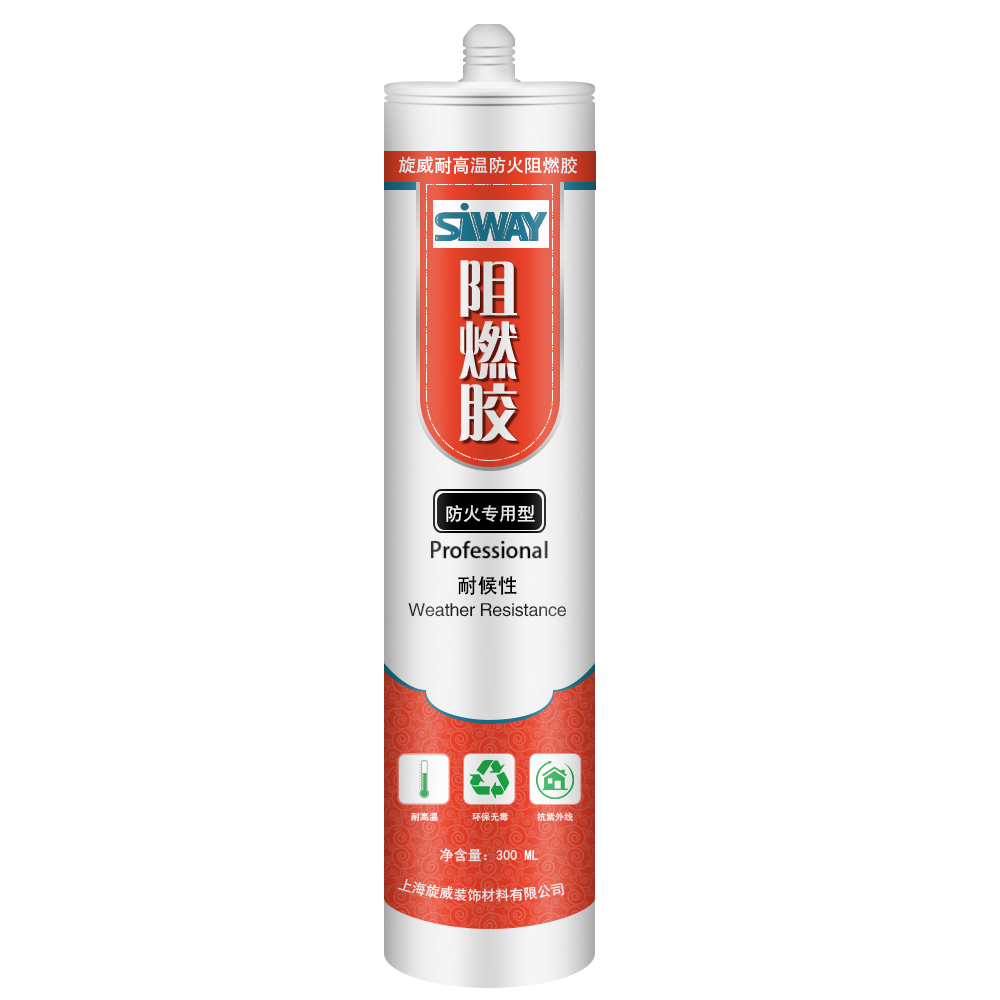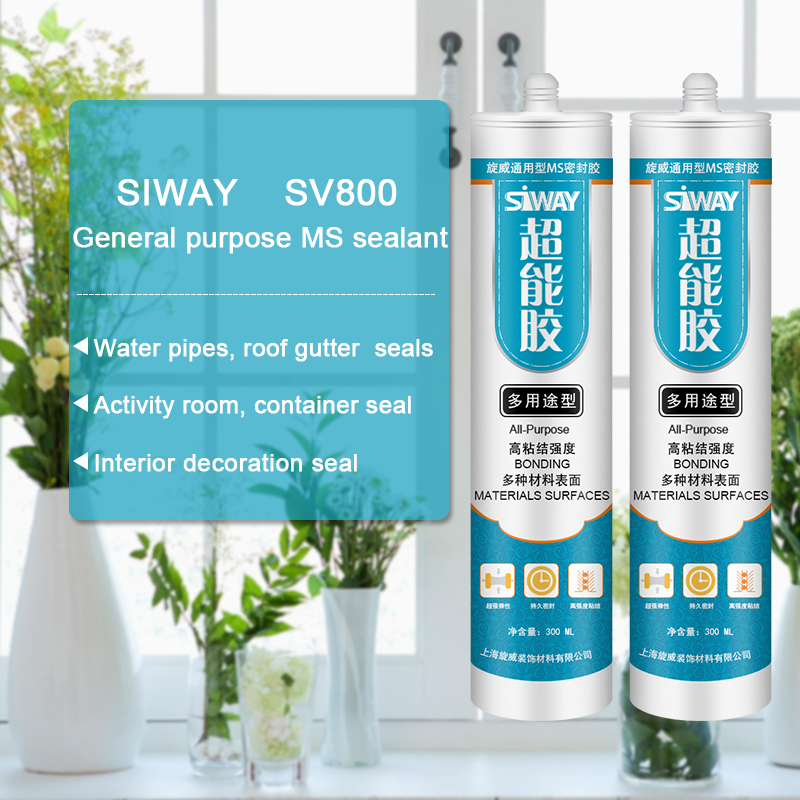2017 wholesale price SV-9300 Fire Resistant Silicone Sealant for Madras Factory
Short Description:
Description SV – 9300 Fire resistant silicone sealant is a one-component, neutral-curing silicone sealant exhibiting superior performance in applications where sealing openings in walls and floors are needed to control the spread of fire, smoke, toxic gasses, and water during fire conditions. Where to use It is an ideal material designed for use in fire-stop systems for through penetrations and joints. This product excels in applications where greater water resistance is required e.g. ...
Our development depends on the advanced equipment ,excellent talents and continuously strengthened technology forces for 2017 wholesale price SV-9300 Fire Resistant Silicone Sealant for Madras Factory, Competitive price with high quality and satisfying service make us earned more customers.we wish to work with you and seek common development.
Description
SV – 9300 Fire resistant silicone sealant is a one-component, neutral-curing silicone sealant exhibiting superior performance in applications where sealing openings in walls and floors are needed to control the spread of fire, smoke, toxic gasses, and water during fire conditions.
Where to use
It is an ideal material designed for use in fire-stop systems for through penetrations and joints. This product excels in applications where greater water resistance is required e.g. curtain wall, building facade, expansion/pipe and cable joints.
Key Features
1. 100% silicone
2. Excellent weatherproofing and waterproofing
3. Low gas transmission rate
4. With highly efficient redundant
Basic Application
- Building fire seam sealed
- Building facade
- cable joints
Technical data sheet
| Test standard | Test project | Unit | value |
| Before curing——25℃,50%R.H. | |||
| GB13477 | Flow, sagging or vertical flow | mm | 0 |
| GB13477 | Operating time | min | 15 |
| GB13477 | surface drying time(25℃,50%R.H.) | min | 40-60 |
| Sealant curing speed and operating time will have different with different temperatures and temperature, high temperature and high humidity can make sealant curing speed faster, rather low temperature and low humidity are slower.21 days after curing——25℃,50%R.H. | |||
| GB/T 531.1-2008 | Durometer Hardness | Shore A | 20-60 |
| GB13477 | 60% elongation of cementation | no damaging | |
| GB13477 | Elongation limit | % | 120 |
| GB/T 24267 | Sealant level | 20HM | |
| GB/T 24267 | Fire prevention level | FV-0 | |
Certification
GB/T 24267-2009
Color
Black
Package
300ml in cartridge * 24 per box
Shelf life
12 months
Note
If you want the TDS or MSDS or other details, please contact with our sales person.
https://amzn.to/2dJdX3m 3″ vent kit Selkirk
https://amzn.to/2egMruQ Chimney Cleaning brush attachment
https://amzn.to/2eEf7fi Duravent kit (I used this product)
https://amzn.to/2dJhsH8 4″ vent kit for longer runs (more air flow)
https://amzn.to/2eEcx9k Termination vent Horizontal
https://goo.gl/PG8tod Click Link to buy the Vent Kit.
https://goo.gl/PG8tod Click this link to get the Vent Kit.
https://amzn.to/2eu3SHu Castle Pellet Stove Free Shipping
https://amzn.to/2eu3SHu 3″ vent kit
https://amzn.to/2h2Vc9V Vent Thimble with OAK
Learn how to install a pellet stove. This pellet stove install shows how to properly treat the outside of your house for a pellet stove installation. Disclaimer:
Doublewide6 has a Master’s Degree in industrial technology with a specialization in Manufacturing, due to factors beyond the control of Doublewide6 and anyone featured in his videos, I cannot guarantee against improper use or unauthorized modifications of this information. Doublewide6 assumes no liability for property damage or injury incurred as a result of any of the information contained in this video or any of Doublewide6’s videos. Use this information at your own risk. Doublewide6 recommends safe practices when working on equipment, power tools, chemicals, electronics, electrical systems, vehicles, and or with tools seen or implied in this video. Due to factors beyond the control of Doublewide6, no information contained in this video shall create any expressed or implied warranty or guarantee of any particular result. Any injury, damage, or loss that may result from improper use of these tools, equipment, or from the information contained in this video is the sole responsibility of the user and not Doublewide6. Please support Doublewide6 by donating to his Patreon Account https://www.patreon.com/doublewide6
The tire on the front passenger side needed some air on my 1998 Nissan Altima. Tires must be properly inflated to achieve maximum handling, traction, and durability as designed by the tire manufacturer. It is the air pressure that supports the weight of your vehicle, not the tire itself. Tire pressure should be monitored frequently for safe driving, savings on fuel consumption and optimal tire performance.
Tire pressure can change with fluctuations in temperature.
First, it’s important to remember that gas expands when heated and contracts when the temperature declines. In North America, the daily temperatures rise and fall between day and night, as well as seasonally. As the days get shorter and colder during fall and winter, it’s especially important to check your tire pressure.
Second, it’s important to know that the recommended tire pressure for your vehicle (as specified in the owner’s manual and the tire placard for the vehicle) are both based on cold inflation pressure. This means that the tire pressure should be checked in the morning before the tire has been run, before the ambient temperature rises during the day, and before the tire is exposed to direct sunlight.
A good estimate to use when comparing tire pressure to air temperature is for every 10 degrees F, tire pressure will adjust by 1 psi. For example, if the outside air temperature increases 10 degrees, the tire pressure will increase by 1 psi. Conversely, if the air temperature falls 10 degrees, the tire pressure will decrease by 1 psi.
In most parts of North America, the difference between average summer temperatures and average winter temperatures is about 50 degrees F. This means that your tires will fluctuate approximately 5 psi (assuming no other air loss) between the coldest and warmest times of the year. A drop of 5 psi during colder months will affect traction, handling, and durability. This is why it’s important to remember to check your inflation pressure, especially during colder times of the year.
In most parts of North America, the average daily air temperature fluctuates by approximately 20 degrees F. Using our rule-of-thumb formula from above, this means that the inflation pressure can fluctuate by approximately 2 psi during the day. This fluctuation can be even more pronounced if the tire is subject to direct sunlight.
In addition to changes from sunlight, the tires temperature is also affected by driving. Tire pressures can increase by up to 5 psi in the first 20-30 minutes of driving, before finally stabilizing.
If you live in a cold climate and have a heated garage, the opposite problem can occur. As soon as you leave the confines of your heated garage and go out into the colder weather, your tires can lose inflation pressure. Again, for every 10 degrees F dropped, the tires will lose approximately 1 psi each.
I created this video with the YouTube Video Editor (https://www.youtube.com/editor)




